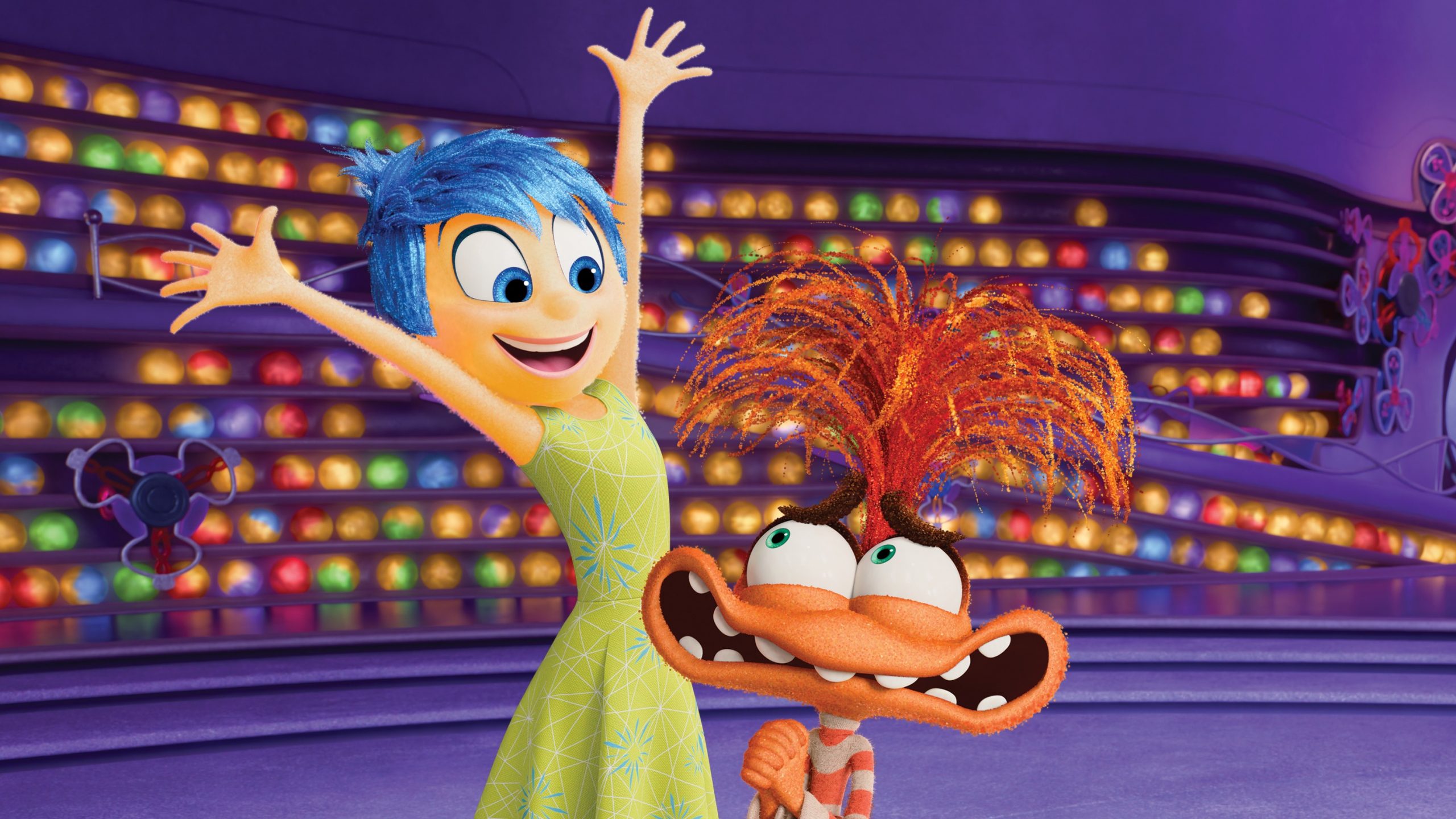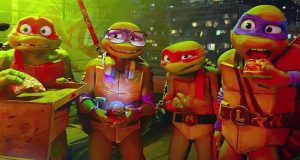
Despite the emotional turmoil of growing up, it would seem little Riley of the Inside Out flicks is living her best life. She’s certainly bringing a much needed win to Pixar Animation Studios. After what has undeniably been a rough post-COVID era for the house of Woody, Buzz, Coco, and so many other beloved animated characters, the return of Amy Poehler’s Joy had no sadness in sight when Inside Out 2 opened to $155 million this past weekend.
Debuting to the second best animated opening day of all-time with $62 million—behind only another Pixar sequel, 2018’s Incredibles 2—the film went on to gross the second best weekend ever in animation, again behind Pixar’s Brad Bird-directed superhero sequel. This debut is also above last year’s animated juggernaut, The Super Mario Bros. Movie. It’s in fact the best opening of any movie since Barbie last July.
The numbers are a much needed win for Pixar, which has seen a brutal couple of years following 2020. That obviously began with the pandemic kneecapping the studio’s new release of Onward right after its opening weekend on March 6, 2020, and continued through with Pixar’s parent company Disney releasing not only their other bold original swing that year, Soul, directly onto Disney+, but as well as every animated film the studio had in the pipeline for the next two years. When Disney belatedly returned to putting Pixar films exclusively back in theaters, families largely stayed away from movies like Lightyear and (initially) Elemental, preferring to wait for the imminent streaming release to Disney+.
The fallout from encouraging families to view Pixar films as streaming fodder culminated in a grim round of layoffs last month where Pixar downsized 14 percent of its workforce.
So the success of Inside Out 2 is a big boon for the beloved animation house, as well as theatrical distribution as a whole, which has seen a historically bleak summer movie season beginning last month. It likewise reinforces several components of conventional thinking, whether accurate or not, percolating throughout the industry.
Pixar, for one, has already signaled they’re pivoting in a more creatively conservative and risk-averse direction. Chief creative Officer Pete Docter, who also directed and co-wrote the first Inside Out, told Bloomberg this month that Pixar focused too much on creators’ personal stories and lived experiences with movies like Luca, Turning Red, and Elemental—two of which we might point out were released simultaneously or exclusively on Disney+—and that the studio needed to return the “commonality of experience.” Fans on social media cried foul, but frankly, the money the studio took home from making a fairly safe (and somewhat diminished) sequel to one of their best films from nearly a decade ago speaks louder.
The lesson will almost assuredly be that a pivot to the “commonality” of mass appeal is a good thing… especially if it’s by way of more sequels. Luckily, Toy Story 5 is already in the pipeline for 2026.
It’s striking that after the relative novelty of Barbie and Oppenheimer both going supernova last July, this summer’s lone successes have been sequels and franchise extensions. While we along with all those who love pure action cinema were crestfallen due to the failure of George Miller’s genuinely mad Furiosa, that so far looks like an outlier in a summer that saw Kingdom of the Planet of the Apes overperform in May. Meanwhile June put some butts back in cinema seats via first Bad Boys: Ride or Die, which opened to $56.3 million last weekend despite the supposed lowering of Will Smith’s Q-score appeal with wide audiences, and now Inside Out 2. All three were sequels to popular franchises, and they did remarkably better than, say, April’s original R-rated actioner Monkey Man or May’s PG-13 action-comedy crowdpleaser, The Fall Guy.
The takeaway from studios will likely be to continue leaning on the audience familiarity with intellectual property and familiar characters/performances. And honestly, in the immediate future that’s probably not the wrong impulse for blockbuster entertainment. Furiosa starred two new faces for that franchise in Anya Taylor-Joy and Chris Hemsworth—who were both ferociously good—but audiences who might have wanted to see Tom Hardy and Charlize Theron back in the Wasteland stayed away. Conversely, Deadpool & Wolverine will see Ryan Reynolds and Hugh Jackman reprise their most beloved IP characters (and for a 10th time in Jackman’s case!), and it’s currently projected by prognosticators to open north of $200 million, better than any previous X-Men or Deadpool movie. Despicable Me 4 might meanwhile be the only other sure-thing left this summer too.
Still, we’d caution putting too much confidence in the “business as usual” strategy as defined by the 2010s. For starters, audiences didn’t mind seeing a belated Mad Max movie back then with a recast lead actor. Furthermore, the cracks in the old formula are still visible from last year’s abundance of superhero movie flops and underperformers, including sequels to first installments that made $1 billion globally (Captain Marvel and Aquaman). Beyond capes, legacy sequels to long dormant series (Indiana Jones and the Dial of Destiny), umpteenth continuations to franchises that have been going steady for decades (Fast X and Mission: Impossible 7), and ostensibly new franchise fodder (The Flash) all went up in smoke.
Audience tastes appear to be in a state of transition, and few folks have figured out what could come next. And honestly, there appears to be more appetite today (up to a point) than half a decade ago for original films as indicated by recent, mid-budget hits like Challengers, Civil War, and Anyone But You. However, the theatrical business model is currently built around a handful of massive tentpoles underwriting studios’ and exhibitors’ whole fiscal year, and unless your original film is directed by Christopher Nolan, there is little in the way of guarantees that audiences will show up.
In that case, it would seem for better and worse, franchise sequels continue to be the safest bet in town. For now. This even demonstrably includes Pixar, which in previous decades made its name off audiences turning out for whatever new original film the studio had in the works. Even as the studio began leaning more heavily on sequels to please shareholders in the 2010s, Pixar also produced Brave, Coco, and, of course, Inside Out in that decade. All of them money makers. Word of mouth also eventually carried Elemental into profit, making one wonder how it (or, say, Soul) might have performed under pre-Disney+ conditions.
Be that as it may, studios’ reliance on IP will be tested outside of the surest of things in the months ahead. For instance, we have a Twister reboot in July without the original leads and a Beetlejuice legacy sequel nearly 40 years later in September, plus new Alien, Gladiator, and superhero movies without fan favorite castings in the near horizon. It seems audiences still prefer turning out in blockbuster numbers for characters and stories they’re familiar with, although it remains an open question which ones…
The post Inside Out 2’s Massive Box Office Turns Pixar Corner, Reconfirms Audiences Want Sequels appeared first on Den of Geek.





